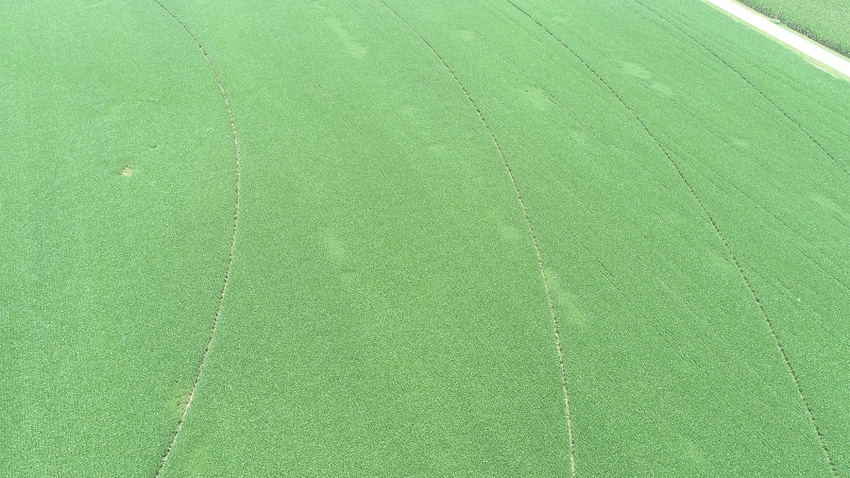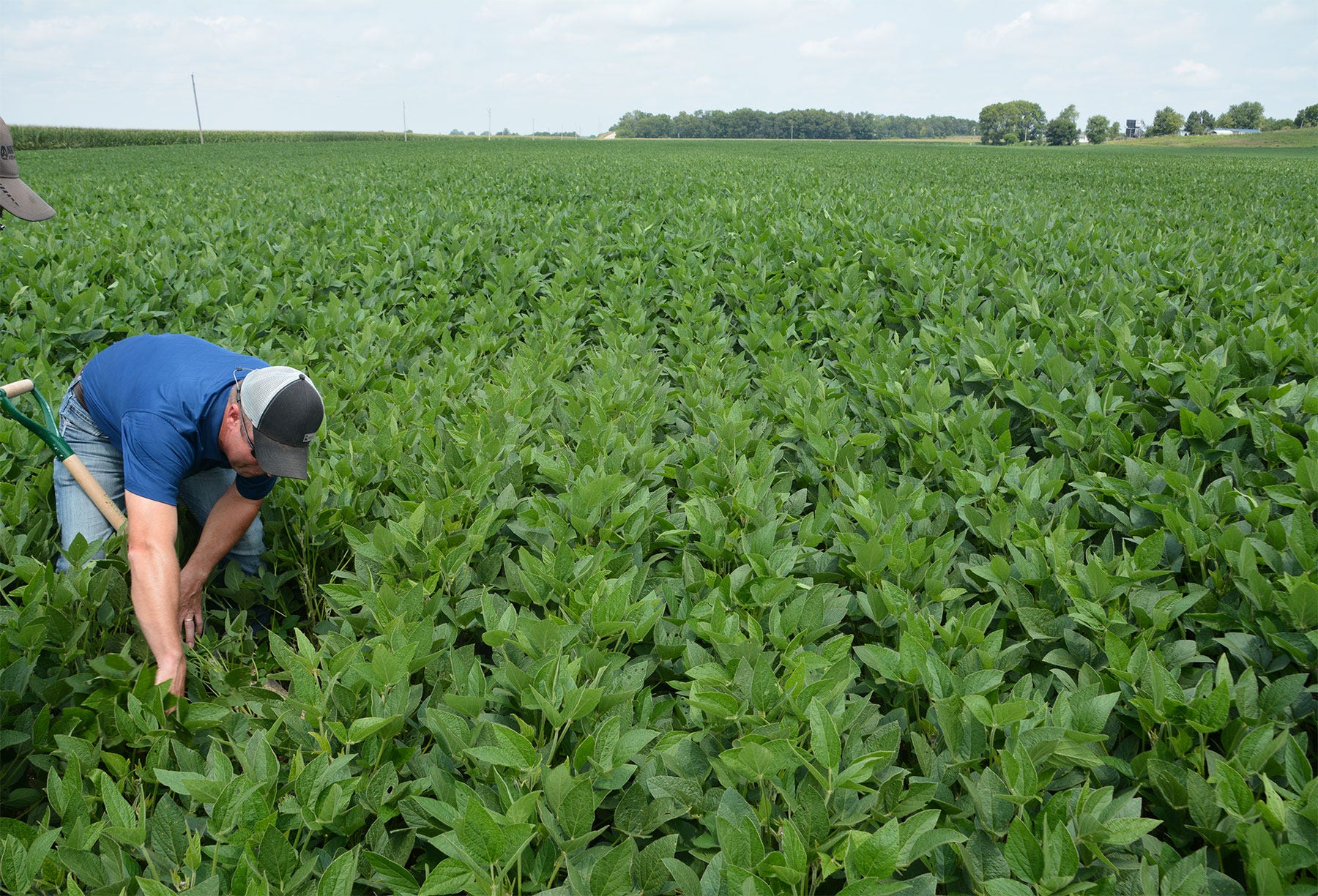
The patches of Canada thistle in the Soybean Watch ’23 field were obvious. You didn’t need to see an image from a drone flight to find them early in the season before the operator sprayed them with a postemergence spray. However, the drone image captured during a flight in late July, after the thistles themselves were long gone, was revealing.
“We confirmed a couple things by studying the pictures taken by the drone,” says Steve Gauck, a regional agronomy manager for Beck’s, sponsor of Soybean Watch ’23. “Through a combination of the drone flight and ground-truthing by inspecting the spots on the ground, we could learn how the thistles impacted the soybeans around them.”
Lesson 1
Walking the field earlier in the season after the thistles were sprayed but before they were completely dead, Gauck noticed a possible pattern of how the thistle patches were distributed across the field. From the ground, it certainly appeared like several patches lined up in a north-south alignment, the same as how rows run in the field. It also appeared that there were several lines of thistle patches going east-west across the field.
“The digital image made it easy to see that indeed, there were several strips of thistles going across the field,” Gauck says. “They appeared to skip about 80 feet from one line of thistle patches to the next.
“The most likely thing is that at some point, someone combined through a thistle patch, and then spread thistle seed out the back. Running with a 40-foot head, it’s understandable that they would be spaced either 40 feet apart, or in multiples of 40 feet. Here, they appeared to be 80 feet apart. Perhaps the year the combine went through the thistle patch, it was combined in lands, and thistle seed was distributed across several passes.”
Lesson 2
The operator achieved good kill on thistles, and not even skeletons were visible when the drone flight occurred. However, Gauck could still see evidence of every thistle patch.
“Soybeans that started the season competing with thistles were lighter green,” he says. “That was evident from the air.”

LIGHTER GREEN: Note the repeating pattern looking over these rows. Wherever soybean height dips, plants are lighter green. Agronomist Steve Gauck says these line up with previous patches of Canada thistle.
Why were soybeans lighter green in color than surrounding plants that never competed against thistles?
“Visiting the spots on the ground, it was obvious those plants were still producing vegetative growth, probably more so than plants not affected by thistles,” Gauck says. “Lots of photosynthesis was still occurring. That’s why those plants were lighter green. They were still hard at work building the vegetative part of the plant.”
Walking the field earlier in the year, Gauck already determined that because plants attempted to outgrow thistles early, they were more spindly than neighboring plants, with more distance between nodes.
“They can’t totally make up for losing those early nodes, but working hard later may help them make up some ground,” he says.
About the Author(s)
You May Also Like




